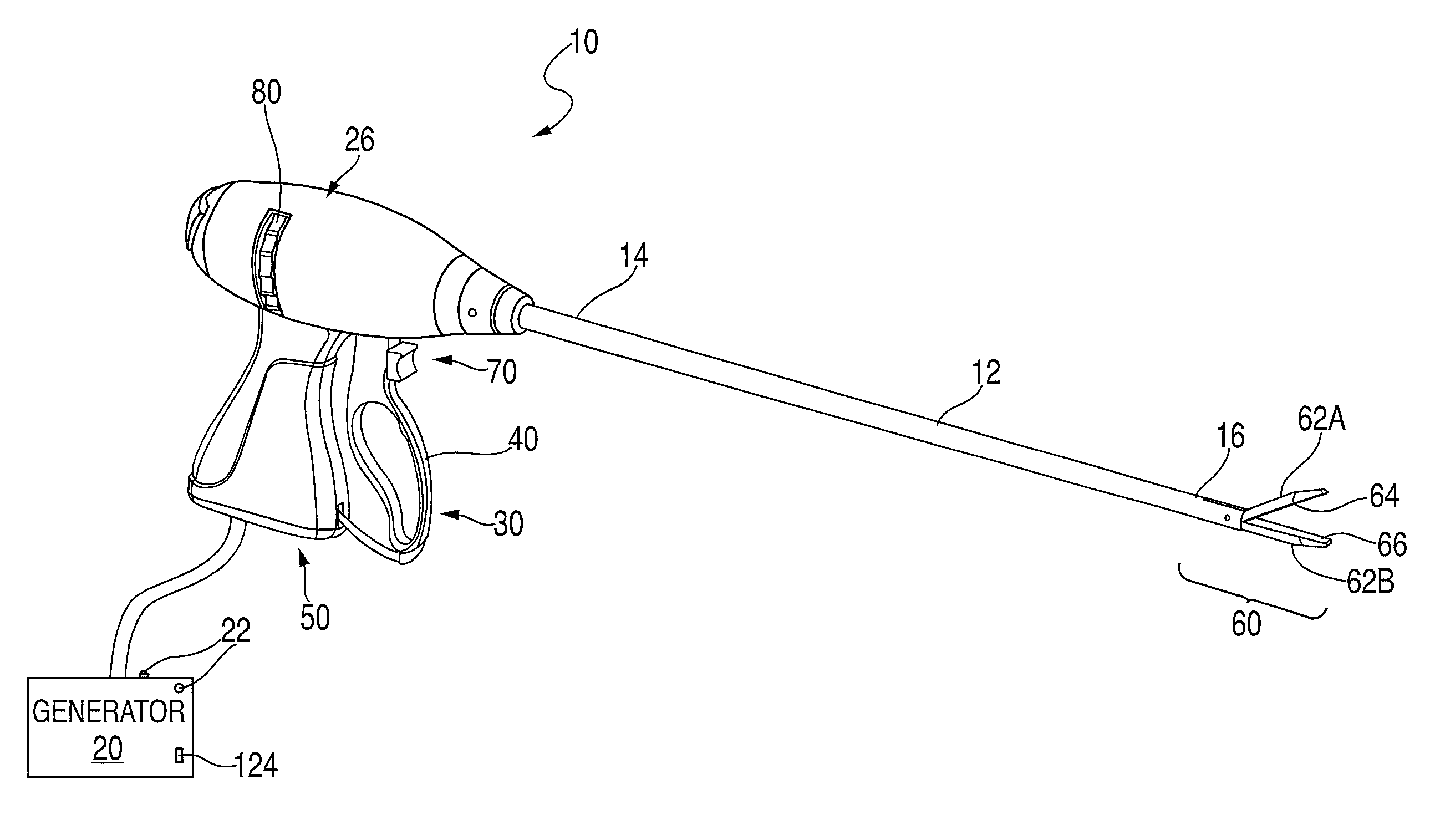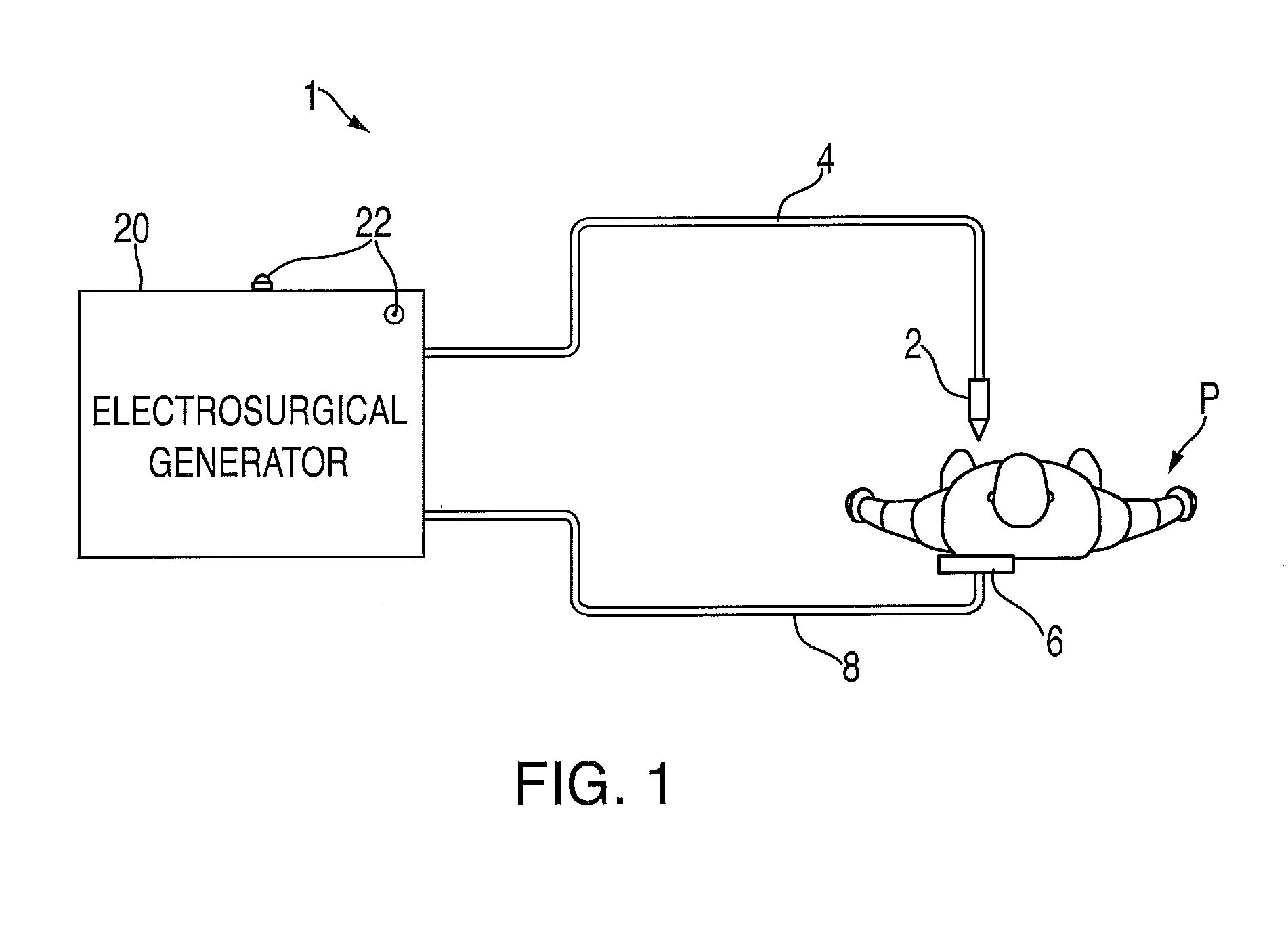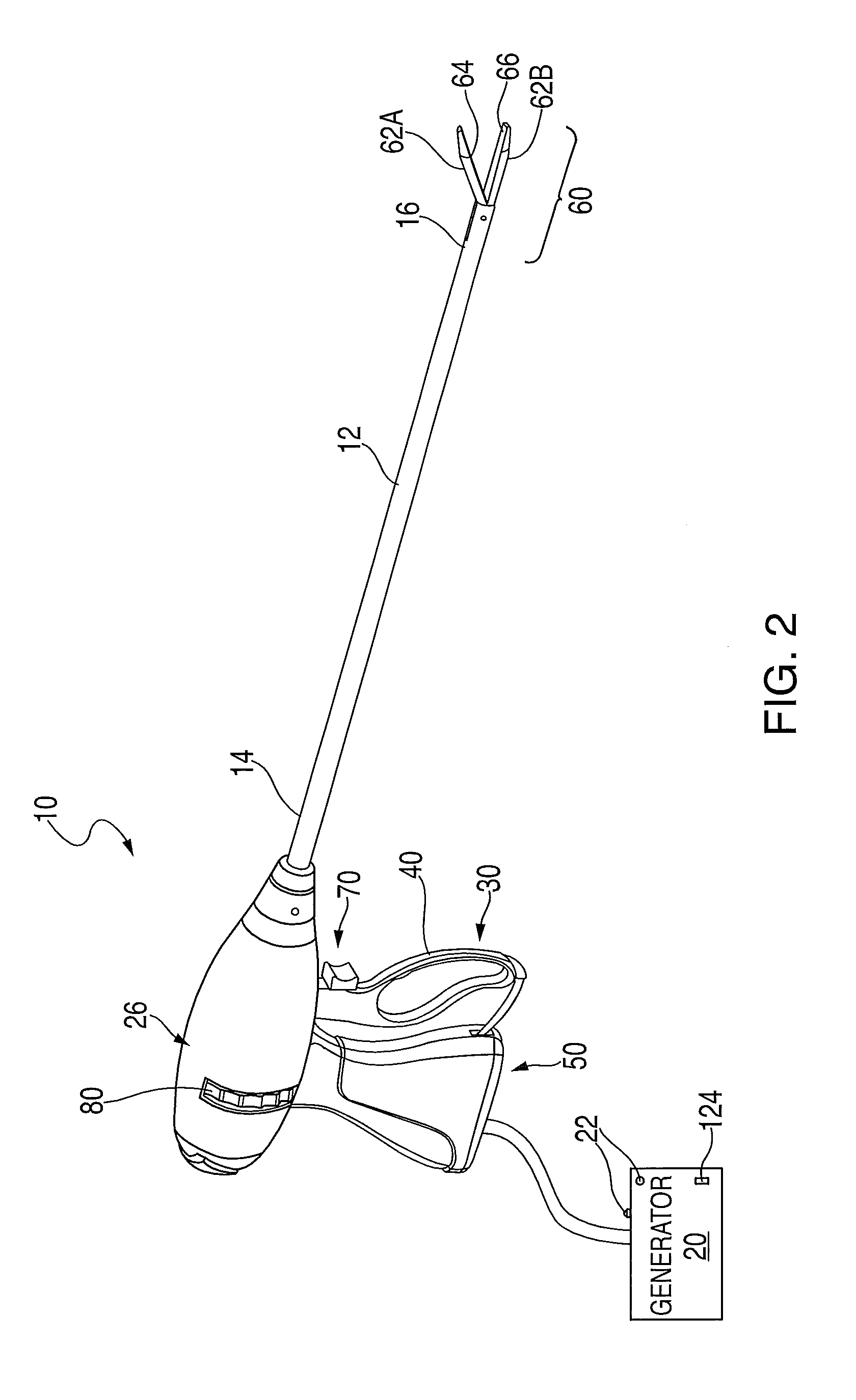System and method for detecting critical structures using ultrasound
a technology of critical structures and ultrasound, applied in the field of open or endoscopic surgical instruments and methods, can solve the problems of poor visibility, inability to detect critical structures, and most difficult tasks, and achieve the effects of low cost, effective integration, and reduced volume of information provided to surgeons
- Summary
- Abstract
- Description
- Claims
- Application Information
AI Technical Summary
Benefits of technology
Problems solved by technology
Method used
Image
Examples
Embodiment Construction
[0060]Particular embodiments of the present disclosure are described with reference to the accompanying drawings. In the following description, well-known functions or constructions are not described in detail to avoid obscuring the present disclosure in unnecessary detail. As used herein, the term distal and proximal are with respect to the medical professional utilizing the device or component, with proximal being nearer to the medical professional either when in use or during insertion to the patient. Thus, for example, the distal end of a surgical instrument is that portion nearer the end which will be inserted into a patient and the proximal end is that portion nearer the end which will remain outside the patient, and be available for treatment application by the medical professional.
[0061]The present disclosure generally relates to a system for identifying anatomical structures, particularly a lumen such as, for example, a ureter, bile or gall duct, a blood vessel, lymph notes...
PUM
 Login to View More
Login to View More Abstract
Description
Claims
Application Information
 Login to View More
Login to View More - R&D
- Intellectual Property
- Life Sciences
- Materials
- Tech Scout
- Unparalleled Data Quality
- Higher Quality Content
- 60% Fewer Hallucinations
Browse by: Latest US Patents, China's latest patents, Technical Efficacy Thesaurus, Application Domain, Technology Topic, Popular Technical Reports.
© 2025 PatSnap. All rights reserved.Legal|Privacy policy|Modern Slavery Act Transparency Statement|Sitemap|About US| Contact US: help@patsnap.com



